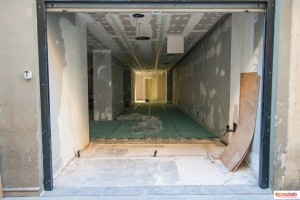If you’ve got a plastering job on and are unsure where to start, one of the many questions you maybe asking yourself is ‘what tools are needed to plaster a wall’? It’s always good to start with the right equipment, that way, once you’ve started the job, there’s no need to down tools and pause what you’re doing when you realise there’s a plastering tool you haven’t got.
We’ve got a huge stock of plastering tools at Gypsumtools featuring products from all the best brands so you can ensure you’ve got the right equipment for the task in hand. Here is a handy list of tools needed to plaster a wall.
Trowel – this is a long rectangular tool which can be used for applying plaster to the wall or smoothing it out. Make sure you use a good clean trowel for the job, to ensure the best finish you can get. We have a multitude of plastering trowels in stock to choose from in some of the most popular brand names, including Marshalltown and Nela. If you’re not sure which one to pick, our staff are always on hand to offer advice.
Hawk – this is a metal square with a handle on the underside, which is a great tool for holding the plaster in place while you dip your trowel in and apply it to your surface. You just hold this in one hand, the trowel in the other and away you go. It does make the job take less time and is a popular choice for the professional plasterer, however if you’re not used to a hawk, it might be best to go with the cement pan (or mud pan) to start with and avoid the spills.
Knife – a good knife is certainly one of the materials you’ll need when plastering and it can be a great piece of kit for all manner of things, from cutting plaster, plasterboard, drywall or tape, to repairing holes in the plaster, or spreading plaster over a small area. There are different kinds of knife available for different plastering jobs, so whether it’s a utility knife, Stanley knife or a jointing knife you need for the work, have a browse through our range.
Water brush – these should be able to tolerate extended exposure to water and can be used as a simple water brush or also for painting ceilings or walls.
Stepladder – not strictly necessary if you’re really tall, or have a piece of wall to plaster that’s not very high. But, for ceilings and hard to reach places these can be invaluable pieces of kit, especially if they also come with a pan shelf for your mud pan.
Spirit level – once you’ve smoothed your plaster down with a trowel, or fixed your plasterboard in place, these are incredibly useful for making sure your work isn’t wonky!
Corner trowel – these are such useful tools when you’re plastering a wall. They’re great for getting into the corners at the edge between the wall and the ceiling when you’re plastering, creating a perfect 90 degree angle, whether you’re using drylining or plaster.
Pole sander – when you’ve done the plastering and you’re smoothing and sanding it down, this is a useful piece of kit for reaching the hard to reach places, to ensure a lovely smooth finish across the board and not just where you can reach.
What you have to remember when you’re wondering what tools are needed to plaster a wall, is to get prepared beforehand. Make sure you have everything you need all ready and prepared for your plastering job before you start.
If plastering is new to you and you’re really not sure where to start, take a look at our plasterer’s starter kit, which includes mixing bucket, bucket trowel, water brush, Hawk, plasterer’s trowel and Wiss straight cut snips. And remember, if you have any questions, we’re more than happy to help. Give us a call or pop in to our Midlands based trade counter today.
When you order online we also offer next day delivery straight to site and free delivery on orders over £50.



